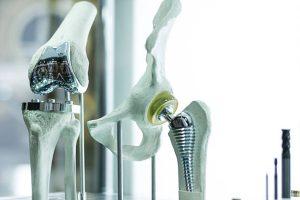
When it comes to Orthopedic medicine, preserving agility is a top priority. The hip and knee joints play crucial roles in our ability to move, walk, and engage in various physical activities. However, as we age or experience injuries, these joints can become susceptible to wear and tear, leading to discomfort, pain, and limited mobility. Thankfully, advancements in medical science have paved the way for revolutionary approaches to hip and knee Orthopedics that priorities preserving agility and improving quality of life.
The Rise of Minimally Invasive Procedures
One of the most significant developments in hip and knee Orthopedics is the rise of minimally invasive procedures. Traditionally, joint replacement surgeries required large incisions and substantial tissue disruption. However, with minimally invasive techniques, surgeons can now perform these procedures through smaller incisions, resulting in less trauma to surrounding tissues.
These innovative approaches utilise specialised instruments, including arthroscopes and robotic-assisted technologies, allowing surgeons to access and repair the joint more precisely. Minimally invasive procedures offer several benefits, such as reduced post-operative pain, shorter hospital stays, faster recovery times, and improved patient satisfaction.
Customised Implants and 3D Printing
Another revolutionary approach in hip and knee Orthopaedics is the utilisation of customised implants and 3D printing technology. Every patient’s anatomy is unique, and a one-size-fits-all implant may not always provide the best fit and function. With the advent of 3D printing, Orthopaedic surgeons can now create personalised implants that match the patient’s specific joint dimensions and alignment requirements.
These customised implants offer several advantages over standard implants. They can help restore joint stability, improve range of motion, and reduce the risk of complications such as dislocation. By tailoring the implant to each individual, surgeons can optimise the patient’s functional outcome, preserving their agility and enhancing their overall quality of life.
Regenerative Medicine and Tissue Engineering
Regenerative medicine and tissue engineering have emerged as promising fields in Orthopaedic research. These revolutionary approaches focus on harnessing the body’s natural healing processes to repair and regenerate damaged tissues in the hip and knee joints.
Stem cell therapy, for example, involves using a patient’s stem cells or donor cells to stimulate tissue regeneration and repair. These cells can be injected directly into the joint, promoting the growth of new cartilage and reducing inflammation. Platelet-rich plasma (PRP) therapy and growth factor injections have also shown promising results in accelerating tissue healing and reducing pain.
Tissue engineering takes regenerative medicine further by combining cells, biomaterials, and growth factors to create artificial tissues and scaffolds. These engineered tissues can replace damaged cartilage, providing a more durable and long-lasting solution for patients with hip and knee problems.
Rehabilitation and Physiotherapy
While surgical interventions and advanced technologies are vital in preserving agility in hip and knee Orthopaedics, rehabilitation and physiotherapy are equally important components of the treatment process. Rehabilitation programs are tailored to each patient’s needs and focus on restoring strength, flexibility, and function in the affected joint.
Physical therapists work closely with patients to develop personalised exercise regimens that target the muscles surrounding the hip and knee joints. These exercises help improve stability, range of motion, and overall joint function. Additionally, therapists may utilise manual techniques, such as joint mobilisation and soft tissue massage, to alleviate pain and enhance mobility.
Conclusion
Preserving agility in hip and knee Orthopedics is a paramount goal for patients and medical professionals. The revolutionary approaches discussed above, including minimally invasive procedures, customised implants, regenerative medicine, and comprehensive rehabilitation, have transformed the landscape of Orthopedic therapy.
By adopting these innovative techniques, Orthopedic surgeons can provide patients with enhanced outcomes, reduced recovery times, and improved quality of life. As research advances, we can expect even more groundbreaking approaches to emerging, further revolutionizing hip and knee Orthopedics and ensuring that individuals can maintain their agility for years.
